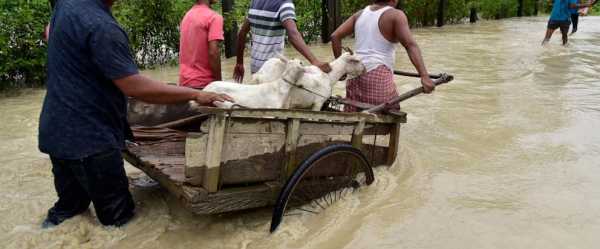
GUWAHATI, India — Tens of thousands of people have taken shelter in government-run relief camps as heavy monsoon rains batter villages in India’s northeast, and one person has died in the floodwaters this week, a government relief agency said Friday.
Assam state is on red alert and bracing for more downpours this weekend by evacuating people from low-lying areas.
Nearly 14,000 people currently are staying in 83 relief camps run by the Assam state government in 20 of the state's 31 districts, the state disaster management agency said in a statement. Overall, nearly 500,000 people have been hit by the monsoon floods in the state.
“We are fully prepared to deal with the situation with our rescue agencies deployed at vulnerable and worst-affected locations,” said G.D. Tripathi, a state government official.
One of Asia’s largest rivers, the Brahmaputra, floods annually. It flows 1,280 kilometers (800 miles) across Assam state before running through Bangladesh, which shares a 260-kilometer (160-mile) border with Assam state.
Mudslides triggered by heavy rains have occurred in several parts of Assam and Sikkim states, the statement said.
In neighboring Meghalaya state, a mudslide demolished a boundary wall at a large sports stadium, damaging several vehicles parked there, media reports said.
In 2022, floods in India and Bangladesh left over a dozen dead and millions homeless.
Annual monsoon rains hit the region in June to September. The rains are crucial for rain-fed crops planted during the season but often cause extensive damage.
The pattern of monsoons has been shifting since the 1950s, with longer dry spells interspersed with heavy rain, according to Roxy Mathew Koll, a climate scientist at the Indian Institute of Tropical Meteorology in Pune. Scientists say climate change is a factor behind the erratic rains, which trigger unprecedented floods in Bangladesh and northeastern India, killing dozens and making lives miserable for millions of others.
Sourse: abcnews.go.com






